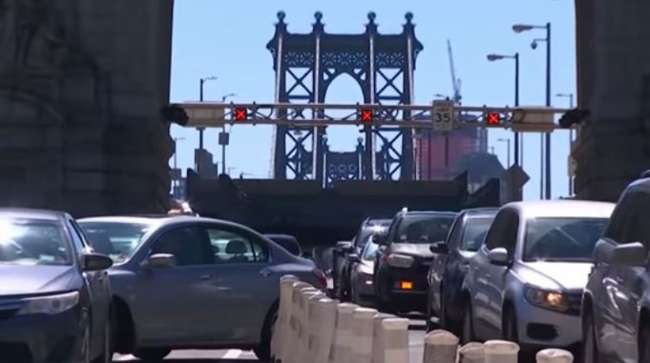Staff Reporter
FHWA Approves Environmental Assessment for New York City

[Stay on top of transportation news: Get TTNews in your inbox.]
The Federal Highway Administration has greenlighted an Environmental Assessment for New York City’s proposed congestion pricing program.
In a letter to various New York transportation agencies, FHWA determined an Environmental Assessment was the appropriate next step for the congestion pricing program, which is meant to manage traffic in Manhattan through tolls. According to FHWA, an Environmental Assessment typically requires less time to complete than an Environmental Impact Statement.
The letter was signed by FHWA New York Division Administrator Richard Marquis and was addressed to leaders representing the New York State Department of Transportation, the New York City Department of Transportation and the Metropolitan Transportation Authority.

Marquis
“After careful review of the relevant information, FHWA believes that our mutual goals of producing needed traffic and air quality analysis and soliciting robust public input from all stakeholders can best be achieved through the preparation of an Environmental Assessment,” Marquis stated in the letter.
The program, known as Central Business District Tolling, would include electronic tolling devices posted along the perimeter of Midtown and Lower Manhattan. Under New York’s proposal, officials would charge a once daily variable toll for vehicles entering this cordoned area. Specifically, the Central Business District is defined as the streets south of 60th Street in Manhattan.
The purpose of the tolling program is to reduce congestion, improve air quality, create a sustainable funding source for transit projects, increase ridership and enhance transit services for low-income residents. New York officials estimate the program would generate $15 billion over four years for the Metropolitan Transportation Authority to make improvements to the existing system.
Previously, FHWA officials had indicated New York must become part of FHWA’s Value Pricing Pilot Program to be able to set up congestion pricing. Joining this program requires a review under the National Environmental Policy Act (NEPA).
The Value Pricing Pilot Program is designed to demonstrate whether (and to what extent) roadway congestion may be reduced through congestion pricing strategies. It also is meant to assess the impact of these strategies on driver behavior, transit ridership and the availability of funds for transportation purposes.
Acting Federal Highway Administrator Stephanie Pollack said the Environmental Assessment will analyze traffic volumes and air quality impacts associated with the proposed tolling program. Representatives from New York, New Jersey and Connecticut will be involved in the process.

Pollack
“The FHWA looks forward to assisting New York so we can arrive at a prompt and informed NEPA determination on this important and precedent-setting project,” Pollack said. “This approach will ensure that the public participates as local and state leaders explore new possibilities for reducing congestion, improving air quality and investing in transit to increase ridership.”
New York is one of a few areas that has explored the potential of congestion pricing. The Los Angeles County Metropolitan Transportation Authority is currently conducting a two-year Traffic Reduction Study, which considers managing traffic through congestion pricing. Los Angeles is home to some of the worst traffic congestion in the country. The city is listed four times on the American Transportation Research Institute’s top truck bottlenecks report, which was released in February.
Want more news? Listen to today's daily briefing below or go here for more info:

